
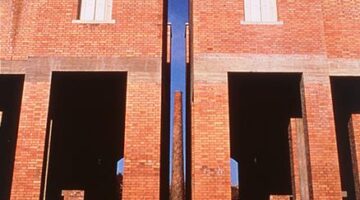


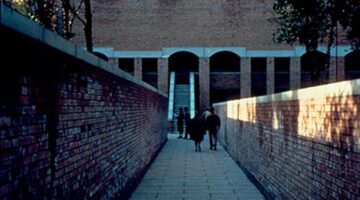
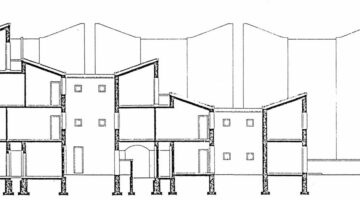

Housing on Giudecca
Main objectives of the project
Collective housing
Date
- 1986: Construction
Stakeholders
- Architect: Valle Architetti Associati
Location
City: Venice
Country/Region: Italy, Venice







Collective housing


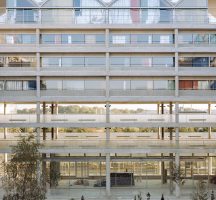

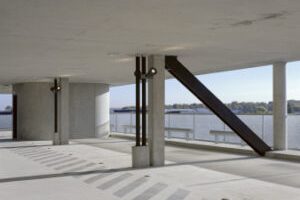
185 social student housing units associated with a reversible car park (housing/offices) with a superstructure of 500 spaces, sports hall, multi-purpose hall and shops
The volume of the building is based on the rectangular shape of the land and assumes its U-shape which encloses the interior of the block. This interior, treated as an open-air garden, is the real lung of the project. Rather than a building, the project should even be presented as an economical and equipped structure. The programme brings together several disparate elements (student accommodation, communal facilities, shops, public and private car parks). The distribution of the different programmes follows a logic of superposition: a double-height ground floor hosting the shops and collective spaces of the student residence; two levels R+1 and R+2 in a large open plateau for public parking spaces; at levels R+3, R+4 and R+5, three levels of housing; and finally an attic level hosting the upper levels of some duplex housing.
As well thought out on the scale of the car as on that of the individual, the building seeks a way between a strictly functionalist approach and that constrained by domestic standards. The clarity of these structural responses allows the building to offer great flexibility and reversibility of use. A Housing program in the heart of the Plateau de Saclay raises some questions: It means to imagine how to live together in an urban environment, founded on its well thought landscape qualities and its situation in a large scale territory. This future hub of activities is located in the centre strip of the Quartier de l’école Polytechnique. The way it has been drawn looks like an American campus inspiration, mostly because of its continuous organisation, which forms a series of compact and opened blocks. The project is part of this strong urban system. Beyond the regularity of this drawing, the question of reversibility has already been well thought, especially regarding mobility.
Our project is founded on these future possible mutations, of uses and space. In its main lines, the project adopts the same morphology of its neighbours. It enhances the existing strong urban lines, but adds a large central space. This large shared garden is the main link between all the different activities of the project. The project distinguishes itself thanks to the presence of this garden. It brings views and breathing, at every floor.
The structure and the program take part in a unique logic. The project is ruled by a sense of economy, in space and in function. It stands as its identity. Following this idea, the building is as compact as it can be. The logic of implantation develops 16m large floors, allowing light to enter, following the whole circumference of the building. The inside spaces are also quite generous, with a 2m50 high for housing and 2m75 for the car park. The ground floor is even higher, 5m25 high, in order to give the possibility to add mezzanines. The strong structure is not only rigorous but also generous.
In the end, the structural grid is more generous than the one usually used in housing programs. The efficient structure is a real choice, using concrete slabs and columns, and allows to get rid of the usual transversal concrete walls. It reinforces the possibilities of variations in the organization: For example, the conversion between a T4 in T1 is very simple.

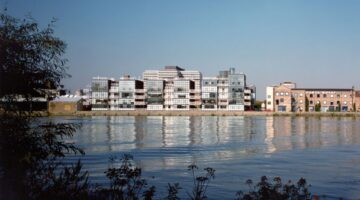

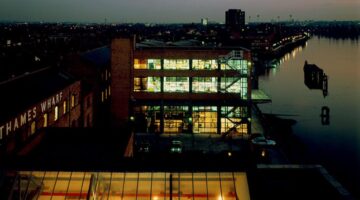

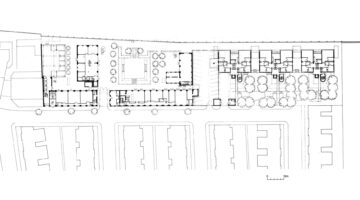
The Scottish Government in the United Kingdom has developed strong capabilities in needs-based strategic planning for housing grant allocation and delivery. It has established an Affordable Housing Supply Programme to deliver 50,000 affordable homes, including 35,000 for social rent, between 2016 and 2021. It recently published an updated “Housing to 2040” policy statement, which aims to deliver an additional 100,000 affordable homes, including 70,00 social rental homes, by the first half of 2032. By working with local authorities, the Scottish Government has channelled increased capital investment to address well-evidenced and locally established housing needs. It has also created a dedicated Housing Infrastructure Fund to address development blockages. Furthermore, the Government continued to employ funds to renovate vacant dwellings and established a new fund to increase affordable housing in rural and remote island areas.

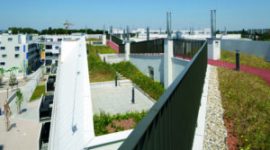
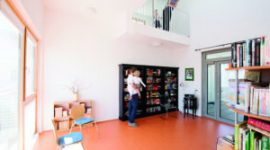
After the competition, the team engaged in discussions with various stakeholders, including Wien Holding, GESIBA (the housing cooperative), the district head, and the Europan secretary. They refined their ideas and concepts and considered rezoning the area but ultimately decided to make slight adjustments to the urban plan instead. The project was approved to be realized under the Wienese Subsidised Housing framework, leading to the division of the site into three parts and the initiation of another competition called Bauträgerwettbewerb. Studio uek was invited to build one part of the project and contribute to the competition brief. Additional experts were involved to address landscape architecture and participation, resulting in rules and regulations that complemented the existing zoning. The project focused on urban porosity and connecting the housing project with the surrounding area. Two other teams were selected to build the remaining parts, each with their own housing concepts. Studio uek constructed 171 housing units, including sheltered housing and a geriatric day center, and incorporated common spaces and a roof-top route that connects the three parts. The participative activation process allowed residents to define programs for smaller communal spaces and participate in the management of rooftop flowerbeds and gardens. Just after the competition, the team entered in a discussion phase with several actors included Wien Holding, the head of the housing cooperative GESIBA, the head of the district and Europan secretary. They had to sharpen their ideas and their concepts. It was also discussed whether the team should consider rezoning the area but then they decided that through a slight translation of the urban plan without really losing a lot of the qualities, they could avoid this time consuming process. At the end of this first phase it was decided that the project should be realized within the framework of the Wienese Subsidised Housing, which meant that the site should be divided into three smaller parts and thar another competition called Bauträgerwettbewerb should take a place. The team was invited both to build one part of this project and to contribute to elaborate the competition brief. In order to pursue their idea from Europan competition, the team involved additional experts for landscape architecture and for participation and all together they formulated additional rules and regulations for this competition brief, which should complement the existing zoning. These rules concerned the configutation of the whole project, but also the character of the garden courtyard, the rooftop route, several main common spaces in each project part and thar should be included in each project a participative activation process.
Studio uek worked on this specific element of urban porosity, on connecting points between the outside road, the surroundings and the inside world of the housing project. Two Austrian teams were selected to build the two other parts of the area. The first one (ARGE Köb&Pollak / Alexander Schmoeger) on the North side worked on experimental housing providing apartments from a very small size like 30m2 up to big shared apartments. The second team (goya ZT GmbH), in the South part, focused on young and urban housing with a lot of sports and leisure facilities inside the housing project. Studio uek built 171 housing (of which 30 are sheltered housing) + a geriatric day centre. The three built parts have some common spaces dedicated, for some of them, to support the small community of the building and for some other, to offer possibilities to inhabitants of the whole project (like the “play and celebration space” in the studio uek part). A roof-top-route links the three built parts offering also collective spaces (like tenants flowerbeds, glass house, summer kitchen…)
The participative activation process allowed inhabitants to define the programs for smaller common spaces and they were also involved in the management of the flowebeds / garden on the roof.
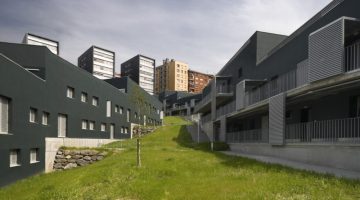



The site was a former iron mine, with a topography that had slopes of up to 50 meters, surrounded by a disorganized and degraded residential outskirts to the north and by the channelled Nervión River and the Miraflores peninsula and Miribilla to the south. The frontier character of the site and its ambiguous and hybrid qualities are preserved. A comb-shaped footprint of several towers separated by lookouts works as a visual filter from the urban environment behind, generating a new façade for the city, introducing order and repetition. In addition, is planned a low-rise, introverted, residential core surrounded by a taller permeter dedicated to offices, amenities, retail areas and civic buildings.
The perimeter acts both as a connector to the neighbourhood and the old road to San Sebastian, as well as a visual and acoustic barrier. On the other hand, the existing neighbourhood, which is very dense, needed porosity, so two sun-filled squares with views were preserved with the open spaces between towers acting as urban lookouts. In the core of the cluster, the buildings rise from a carpet of green spaces that act as intermediary spaces.
Six residential buildings spill randomly throughout the hill, almost like a river, without subordinating themselves to parallel alignments, but controlled by a rational geometry. The buildings, following the idea of long-tiered-sigzag, generate a series of exterior voids that get narrower and wider, creating an intermediate scale of communal spaces.
The mixed typology of the buildings combines the volume of the single-family row housing and the functionality of a social housing building with access through corridors. Each unit is accessed from the outside, with independence, provided by its individuality, but stacked one on top of each other, using the collective logic. The longitudinal orientation of the building, approximately north-south, determines that the access corridors, where the entry halls, kitchens, laundry rooms, and bathrooms are facing, need to look north. The south façade, facing the ideal sun conditions and views, is then dedicated to bedrooms and living rooms.
“End and top off the edge of town. It was the responsibility of the proposed architecture to order against confusion”.
“Convert the upper street to a viewer street. The buildings will mark, surprise with different views different from the other side”.
“Project houses to look to the landscape and noon, the park and the streets”.
“It is about Sewing vertically, assigning that role to the own building”.
The result all the premises of the place and the intentions on the project are five residential towers perched on a stepped base (due to the sharp slope) that absorbs all the sector garages which is accessed by a new street below; intermediate semi-public squares looking at the views across the Nervión; all the living rooms facing the midday sun.
In 2008, the Habitat for Humanity International established a partnership with Mikrofond EAD, a microfinance organization in Bulgaria that focuses on underserved regions and communities.
They have run a project together to deliver housing microfinance services to clients in housing poverty throughout Bulgaria.[1]
Before the partnership, Mikrofond offered only business loans, but it saw an opportunity to introduce consumer loans for home improvements. The size of the loans provided was EUR 1,750 (USD 2,365) and the average payment duration is 31 months.
Habitat for Humanity Bulgaria (http://hfh.bg/bg/) and Mikrofond also jointly provide financial education programmes to their clients. These cover budgeting, saving, debt management and financial planning, along with raising clients’ awareness about the benefits and risks of using credit.
[1] Habitat for Humanity, “Shelter Report 2014” (see sect. Microfinance for self-building and modernising housing, footnote 175).